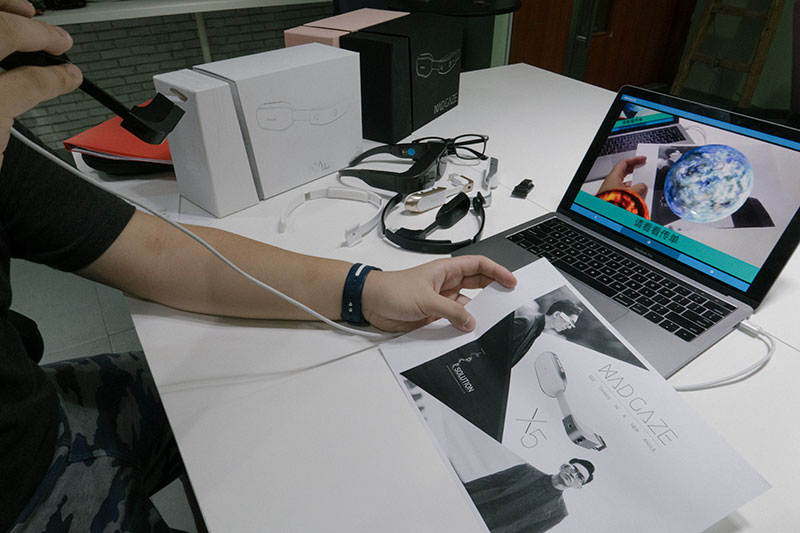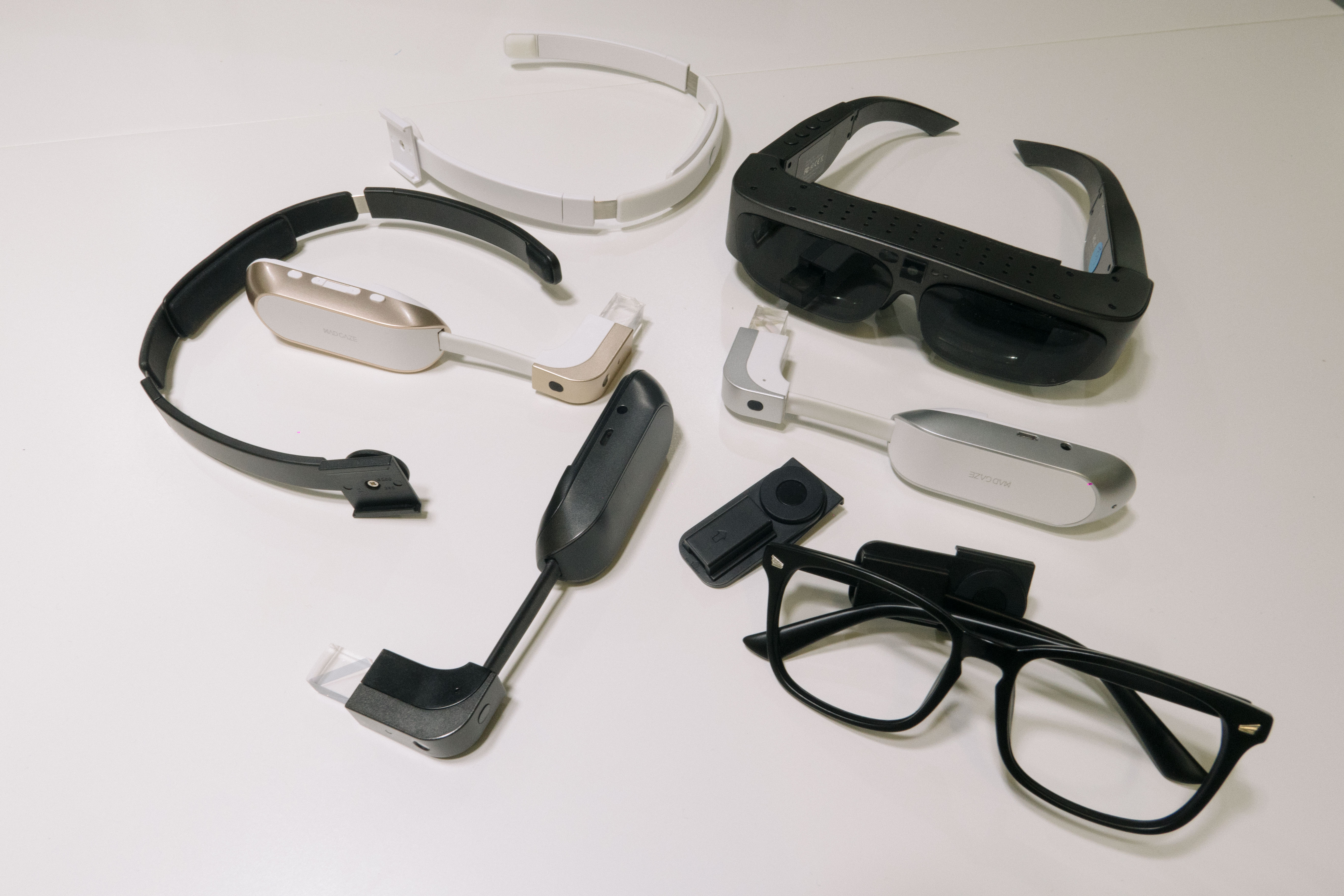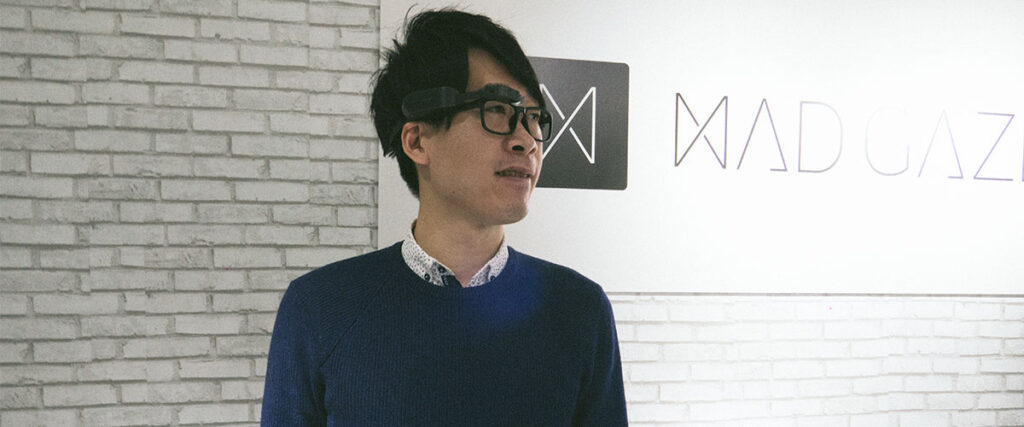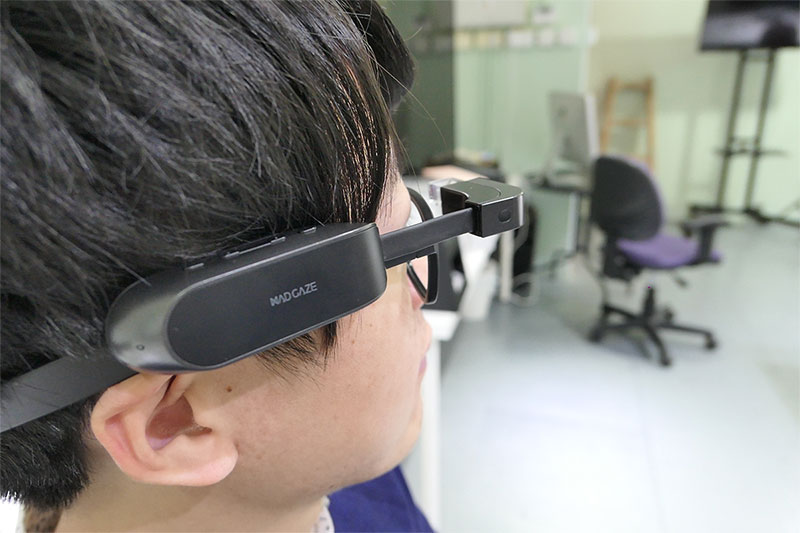Convinced he can better the smart glasses efforts of Google, MAD Gaze founder Jordan Cheng has made it his life’s mission to create the world’s first leading AR smart glasses.
Winner of the Hong Kong ICT Awards Best Innovation Grand Award and Entrepreneurial Innovation Gold Award, Jordan Cheng has always envisaged himself at the centre of the Augmented Reality (AR+) ecosystem, and he’s well on his way. His company MAD Gaze currently has 3 AR smart glasses on the market: X5, Ares, and their latest creation Vader. Read on as we peek into the future with the self-styled ‘Father of Smart Glass in Hong Kong’.
MAD Gaze has been called “Hong Kong’s answer to Google Glass”, but founder and CEO Jordan Cheng has even bigger plans. Determined to improve on Google’s offering, he has created user-friendly smart glasses that have all the functions and more of the most advanced smartphones. Through the use of AR technology, his products make the surrounding real world become both interactive and digital. Incorporating motion sensors and voice detectors and operated by multi-touch and voice control, they are also completely hands free. Extra features include instant translation, phone calls and texts, games and video, and GPS navigation. To put it simply, they’re a game-changer in the world of AR technology.

After building his first AR platform in 2013, Jordan quickly came to the conclusion that mobile phones were not the most suitable gadget for AR technology, due to the fact that you had to physically hold the device in your hand in order to experience the AR effects. This led to his team buying and testing the two most famous smart glasses available on the market at the time, namely the Google Glass and the Epson Moverio BT-300. And they discovered problems. Both smart glasses, for example, lacked application insights and had an extremely low battery life of 50 minutes. On top of that, the optical display wasn’t clear enough when being worn outside, resulting in many wearers experiencing symptoms like dizziness and even nausea. Faced with all these issues, Jordan remembers thinking, “How can we promote AR technology with these being the current devices on the market? We can’t wait for Google or Epson to create better ones.” It was at that moment that he and his partner decided to take it upon themselves to create what he calls “real AR smart glasses.”

Recently, global investment banks have made predictions that the international AR market will reach a value of USD 150 billion by 2020. Competition, therefore, to be the first real AR smart glass on the market is fierce. In Asia, MAD Gaze’s main competitors are Microsoft’s HoloLens and Epson, but Jordan is upbeat. “The technology we’ve used to produce our latest product, Vader, is mature. While HoloLens needs 4 cameras for gesture control, we only need one – a simple mobile phone camera. Also, our screen’s field of view (FoV), at 45 degrees, is much larger and brighter than that of our competitors, who are at 30 degrees and 23 degrees, respectively.”
Internationally, MAD Gaze’s biggest competitor is Apple. “Apple is always going to be a market leader,” says Jordan, “regardless of what kind of product they launch.” Still, he predicts that, whilst Apple could potentially announce their AR smart glasses early next year, it’s more likely that it’ll be in 2020, “so we still have around 2 years to build up our brand and focus on the B2C sector.” The race is on, therefore, for MAD Gaze to build up their product name in the same way that DJI and GoPro did, cementing themselves as the go-to brand for AR smart glasses, beating Apple to the punch and undercutting them on price.
The process, though, has not been easy, or cheap. Having started with an initial capital of HKD 20 million, “In the first 3 years we used around HKD 3 million – just on research and development. On top of R&D, there’s the hardware, the software, the platform – you need a lot of resources in order to build the AR ecosystem,” explains Jordan. As well as raising capital through investors, MAD Gaze also managed to successfully raise funds on Kickstarter. Jordan’s tips on how to succeed on the crowdfunding platform focus heavily on the branding side of things. “The product must be unique. If you have some gimmick it’s even better. Be sure to have an attractive video and description, and spend at least half a year in preparation before you launch your campaign.” Given that their product is more on the expensive side, MAD Gaze’s main motive for using Kickstarter was actually not specifically for raising funds. Instead, it was more for PR & marketing purposes. For Jordan, branding has always been key – and this is obvious from their website and various online campaigns.
When asked about his thoughts on the future of wearables, Jordan claims that AR smart glasses will replace mobile phones in the next five years, “This is a must. Our target is to replace the tablet within three years, as our target user is the same as the tablet user”. One of the advantages of smart glasses over devices like the mobile phone and tablet is that smart glasses are hands-free. It’s not so hard to get on board with Jordan’s predictions when you take into consideration these factors and the fact that tablets, with their Bluetooth wireless keyboards, are already effectively replacing the laptop. The entrepreneur hopes that when they launch Vader, their fourth generation smart glasses featuring 2 flip Bluetooth keyboards, some laptop users will even make the transition to wearable tech.
With 50 members on their Hong Kong and Shenzhen-based teams, and plans to set up offices in Southeast Asia and then the US, MAD Gaze shows no signs of slowing. Be sure to keep an eye out for the release of MAD Gaze’s 4th generation Vader in May to see if Jordan Cheung’s vision of the AR future indeed plays out.






